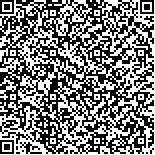下载中心
优秀审稿专家
优秀论文
相关链接
摘要

精确估算森林生物量对全球碳平衡以及气候变化的研究有重要意义。以亚热带天然次生林为研究对象,借助地面实测样地数据,通过对机载LiCHy(LiDAR,CCD and Hyperspectral)传感器同时获取的高光谱和高空间分辨率数据进行信息提取和数据融合,建模反演森林生物量。首先通过面向对象分割方法进行单木冠幅提取,然后融合从高光谱数据提取的光谱特征变量和从高空间分辨率数据提取的单木冠幅统计变量,构建多元回归模型估算地上、地下生物量,最后利用地面实测生物量经交叉验证评价模型精度。结果表明,综合模型的精度(R2为0.54-0.62)高于高光谱模型(R2为0.48-0.57);在高光谱模型中地上生物量模型精度(R2为0.57)高于地下生物量模型(R2为0.48);在综合模型中地上生物量模型精度(R2为0.62)同样高于地下生物量模型(R2为0.54)。交叉验证结果表明,与仅使用高光谱数据(单一数据源)相比,通过集成高光谱和高空间分辨率数据的生物量反演效果有所提升,可以更加有效地估算亚热带森林生物量。
An accurate estimation of forest biomass is important for global carbon balance and climate change studies. The integration of hyperspectral and high-resolution data can provide abundant spectral and spatial detail information, and accurate biomass estimates. However, acquiring hyperspectral and high-resolution data at the same time is difficult, and related applications of integrated data are limited in the range of subtropical forests. This study used hyperspectral and high-resolution data acquired simultaneously in a subtropical natural secondary forest with field-measured data to estimate forest biomass. It provided a new approach in estimating the biomass of subtropical forests accurately.
In the study, LiDAR-CCD-hyperspectral-integrated sensor was used to obtain hyperspectral and high-resolution data at the same time in a subtropical natural secondary forest. A total of 30 square plots (30×30) were established across the study site. First, tree crown features were extracted from high-resolution images by multi-scale segmentation based on edge detection. Second, five sets of spectral metrics were extracted from hyperspectral images. Third, the metrics extracted from hyperspectral and high-resolution images were integrated to build forest biomass models by using stepwise regression. Finally, cross-validations were used to assess the estimation accuracy of the models.
The accuracy of integrated models (R2=0.54-0.62) is higher than that of hyperspectral models(R2=0.48-0.57); the accuracy of aboveground biomass in hyperspectral model (R2=0.57) is higher than that of belowground biomass (R2=0.48);and the accuracy of aboveground biomass in the integrated model is (R2=0.62) higher than that of belowground biomass (R2=0.54). Cross-validation results indicate that the integrated model is better than the hyperspectral one, and that hyperspectral and high-resolution data obtained at the same time through integrated sensor can be used in estimating biomass in subtropical forests effectively.
This study provided the effective approaches in estimating the biomass of subtropical forests by using remotely sensed data, and it proved that the integration of hyperspectral and high-resolution data can also help in estimating forest biomass accurately. This approach may provide an important basis for research on ecosystem and carbon cycle in subtropical forests.

